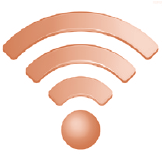CSAIL is committed to pioneering new approaches to computing that will bring about positive changes in the way people around the globe live, play and work.
The largest research laboratory at MIT, CSAIL hosts over 1,700 members, 130+ distinguished researchers, approximately 1,200 graduate students, 119 postdocs, 60 research groups and over 900+ active projects. Our lab overflows with innovative and impactful ideas in computer science and artificial intelligence, focusing on novel ways to make systems and machines smarter, easier to use, more robust, efficient and more secure.
Faculty and researchers represent all five schools at MIT and 11 different departments. Well-known CSAIL researchers include Ron Rivest (inventor of RSA security), Tom Leighton (co-founder of Akamai), Rodney Brooks (founder of iRobot), emeritus member Fernando Corbato (inventor of the computer password), and Tim Berners-Lee (inventor of the World Wide Web) among others. Additionally, our lab is home to nine of the world’s Turing award winners and nine MacArthur fellows as well as many distinguished members of the academies.
CSAIL’s 130+ principal researchers have departmental appointments in all five MIT schools and 9 departments, including:
- Aero/Astro Engineering
- Biological Engineering
- Brain & Cognitive Studies
- Comparative Media Studies/ Writing
- Earth, Atmospheric & Planetary Sciences
- Electrical Engineering/Computer Science
- Mathematics
- Mechanical Engineering
- Finance
CSAIL students include PhD, Masters in Engineering and some undergraduates associated with the Lab through research projects.

- 99 Professional Society Fellows
- 45 NAE/NAS/IM Members
- 9 MacArthur Fellows
- 10 Turing Awards
- 3 Nevanlinna Prizes
- 1 Millennium Technology Award
- 1 Knight Commander of the Order of the British Empire (KBE)
At CSAIL we have over 900 active research projects. Through Alliances, your organization will have the opportunity to connect with the latest technologies in computer science and artificial intelligence.
CSAIL has over 500 startups that have spun out of the lab with focus areas in AI, Machine Learning, Data Science, Software Development, Robotics, Big Data, 3D printing, IoT, and more.
Some of the industry areas our startups impact include: Insurance, Healthcare, Transportation, Security, Technology.
After graduation, CSAIL alumni go into industry, academics and other careers, including startups.

The research at CSAIL applies to many industry sectors. Principal investigators (PIs) – CSAIL lead researchers- value industry members sharing current issues impacting business. Often research in the lab is driven by this feedback from lab partners. Listed below are the key areas where research and industry needs meet.






Computing Defense Energy Finance Manufacturing Media


![]()


Medical Retail Smart Cities Transportation Wireless
Algorithms & Theory
Foundational work that includes complexity, parallel computing and game theory
________________________________________________________________________________________
AI & Machine Learning
Spanning natural language processing, deep-learning, computer vision and more
________________________________________________________________________________________
Computational Biology
Understanding disease via epigenomics, gene regulation and bioinformatics
________________________________________________________________________________________
Computer Architecture
How CPUs, memory and other systems are designed and organized
________________________________________________________________________________________
Graphics & Vision
Teaching computers to interpret, create and animate visual data
________________________________________________________________________________________
Human-Computer Interaction (HCI)
Software and hardware that let us naturally interact with technology
________________________________________________________________________________________
Programming Languages & Software Engineering
From compilers and verification to software design and engineering
________________________________________________________________________________________
Robotics
Vision, actuation, sensing and manipulation of machines
________________________________________________________________________________________
Security & Cryptography
Developing technologies to prevent and recover from cyber-attacks
________________________________________________________________________________________
Systems & Networking
From distributed systems and databases to wireless
________________________________________________________________________________________
CSAIL Research Groups

